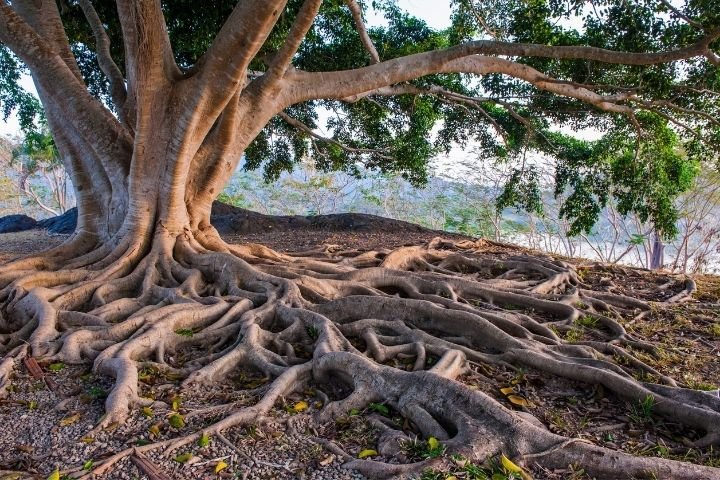Trees, with their sprawling root systems and towering canopies, are vital components of urban and natural landscapes alike. Yet, urban development often poses significant challenges to their health, particularly through root damage caused by construction and landscaping activities. In recent years, the advent of AirSpade technology has revolutionized the way arborists and landscapers approach root excavation, offering a non-invasive method that prioritizes tree health and ecosystem preservation. This article delves into the importance of preventing root damage and how AirSpade technology plays a crucial role in achieving this goal.
Understanding Root Damage
Root damage can occur in various forms during construction, landscaping, or utility maintenance activities. Common causes include:
- Mechanical Injury: Cutting or severing roots with heavy machinery or sharp tools.
- Soil Compaction: Heavy equipment or foot traffic can compact soil, reducing oxygen and water availability to roots.
- Excavation Trauma: Rough handling during excavation can tear or break roots, impairing nutrient uptake and stability.
- Chemical Exposure: Construction materials or chemicals used near trees can leach into the soil and harm roots.
These factors collectively contribute to stress, decline, and sometimes death of trees, especially mature ones that have established extensive root systems over decades.
The Role of AirSpade Technology
The Air Spade, a pneumatic tool powered by compressed air, has transformed root excavation practices by offering a gentle, non-destructive alternative to traditional methods. Instead of cutting through soil with sharp edges or heavy machinery, the AirSpade releases a high-velocity airstream that effectively loosens soil particles without causing damage to nearby roots. This technology is particularly advantageous in urban environments where space is limited and trees are often surrounded by infrastructure that requires careful handling.
Benefits of AirSpade Technology in Preventing Root Damage
- Non-Destructive Excavation: The AirSpade allows operators to excavate soil around tree roots without cutting or damaging them. This preservation of root structure is crucial for maintaining tree health and stability, as intact roots can continue to support the tree’s nutrient and water uptake systems.
- Soil Preservation and Aeration: Unlike traditional excavation methods that can compact soil, the AirSpade’s air stream aerates the soil as it excavates. This promotes better root growth by maintaining soil structure and allowing for improved water infiltration and nutrient availability.
- Precision and Control: Operators using the AirSpade have precise control over excavation, making it suitable for tasks that require careful handling around sensitive root systems or in confined spaces. This precision reduces the risk of accidental damage and ensures that surrounding vegetation remains undisturbed.
- Environmental Sustainability: By minimizing soil disturbance and preserving root health, AirSpade technology contributes to environmental sustainability. It reduces the need for post-excavation remediation and minimizes disruption to the surrounding ecosystem, including other plants and soil microorganisms.
Case Studies and Real-World Applications
Numerous case studies and practical applications highlight the effectiveness of AirSpade technology in preventing root damage and preserving tree health:
- Urban Redevelopment Projects: In urban settings where construction projects often threaten mature trees, the AirSpade has been instrumental in carefully excavating soil around tree roots. This approach has preserved the integrity of root systems and allowed trees to thrive amidst urban expansion.
- Utility Maintenance: During utility maintenance activities, such as installing or repairing underground pipes or cables, the AirSpade has been used to uncover and work around tree roots without causing damage. This application ensures that trees remain healthy and continue to provide their ecological benefits.
- Landscaping and Tree Planting: In landscaping projects, especially when transplanting trees or preparing planting sites, the AirSpade minimizes root disturbance. This contributes to higher survival rates of transplanted trees and promotes faster establishment in their new environment.
Best Practices and Considerations
To maximize the benefits of AirSpade technology and prevent root damage effectively, several best practices should be observed:
- Training and Certification: Operators should undergo proper training to use the AirSpade correctly and safely, ensuring that they understand the principles of non-destructive excavation around tree roots.
- Pre-Construction Planning: Incorporating tree preservation plans early in the project design phase helps identify sensitive root zones and develop strategies to minimize impact during construction.
- Monitoring and Maintenance: Regular monitoring of excavated areas and ongoing maintenance of tree health are essential to detect any signs of stress or decline post-excavation.
- Collaboration with Arborists: Working closely with certified arborists can provide valuable insights into tree health and root system characteristics, guiding excavation practices to ensure minimal impact.
Conclusion
AirSpade technology represents a significant advancement in arboriculture, offering a sustainable solution to the age-old problem of root damage during construction and landscaping activities. By prioritizing non-destructive excavation and root preservation, AirSpade technology not only safeguards individual trees but also contributes to the overall health and resilience of urban and natural ecosystems. As cities expand and green spaces become increasingly vital, tools like the AirSpade play a crucial role in fostering harmonious coexistence between urban development and nature.
In conclusion, the adoption of AirSpade technology marks a paradigm shift towards more environmentally responsible practices in urban forestry and landscaping. By embracing innovation and prioritizing tree health, we can create sustainable urban environments where trees thrive, providing numerous ecological, social, and economic benefits for generations to come.



